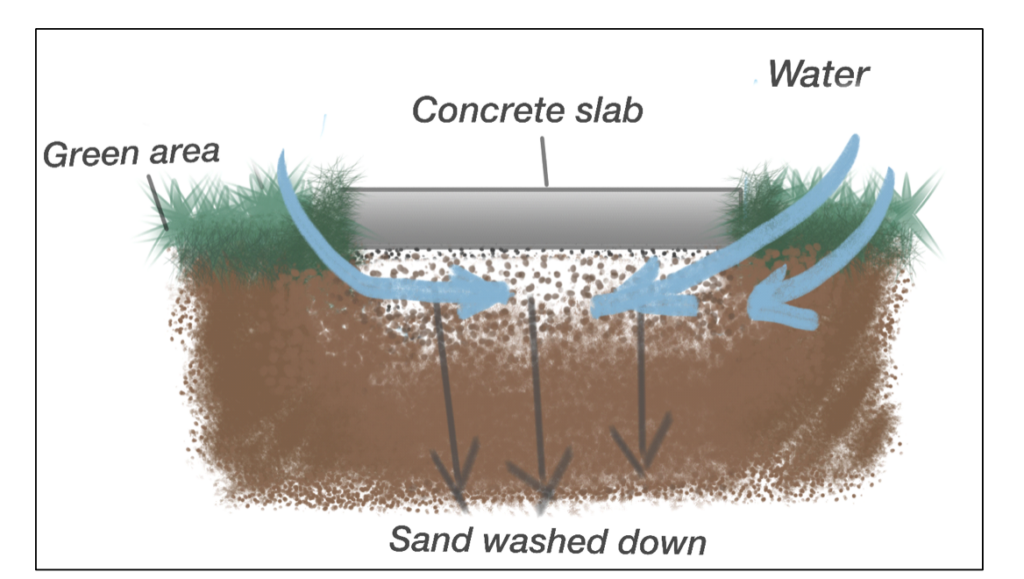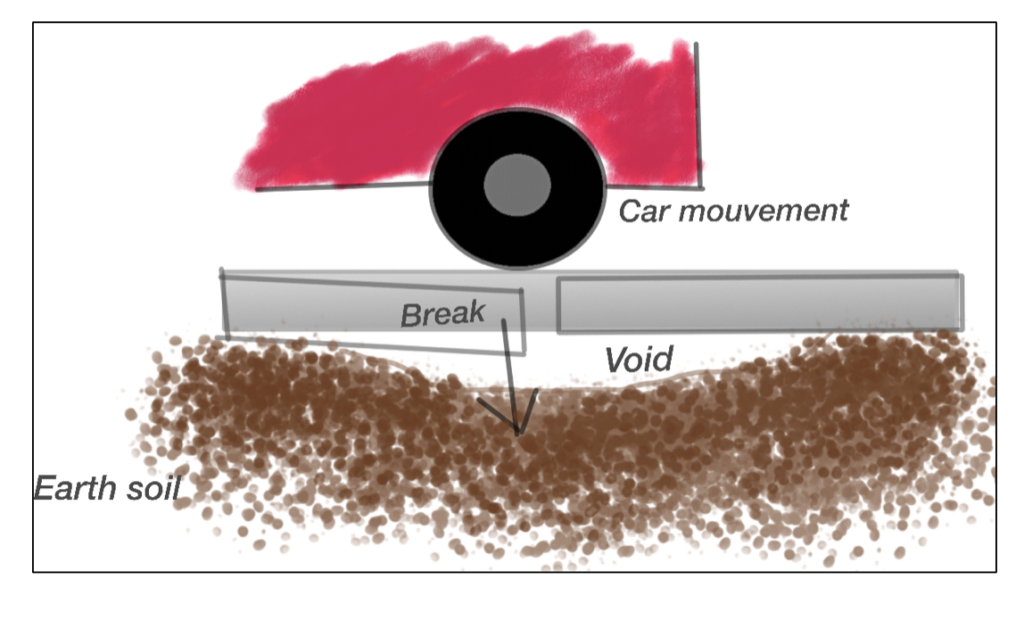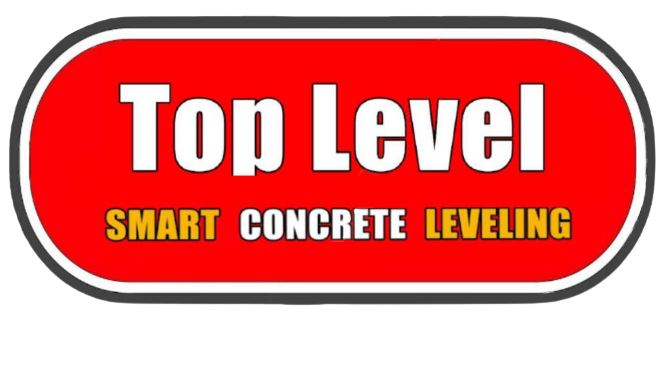Concrete Settlement : What causes concrete to settle
Concrete slabs, driveways, walkways usually are poured on a subbase consisting of ground and sand, even if it is compacted well, throughout time, water seeps from surroundings, green area, or though aged, broken sealants in expansion joints.
Seeping water from joints and surroundings green and will by time, wash the sand in the subbase area and eventually the ground will shift down and create voids and hallow areas under the heavy concrete slab.
Concrete in general is strong under pressure and not tension when we have voids under a flat concrete slab and dynamic movement (car driving on top of it). Almost like a long, thick piece of glass laying flat and applying presence in a certain area the glass will break right away.
Typical, smart solution to fix settled concrete
As we stated in our previous articles about the causes of concrete settlement and the voids build up underneath
In the article, we will explain why foam injection is the best solution to bring concrete back to its original solution.
Unfortunately, my costumers will think immediately of replacing settled concrete which is high in cost and the broken removed concrete is not environment friendly and will obstruct access to the garage for days.
At almost ¼ pf the cost foam injection can solve the problem in 1/10 of the time. When the foam is injected, it spreads in 3 dimensions to fill all the voids and the pushes. The concrete is up to its original states as per sketch one.
Mudjacking vs Polyurethane Foam in concrete settlement repair
Foam weights about 2 ½ lbs./ cab feet.
While mud (liquid concrete weighs about 150 lb./ cubic foot.
If we are solving the problem of settled soil the more weight (mud) the more it will settle, beside (mud) will dissolve with time and push the soil underneath down more.
The foam is very strong and very lightweight. Polyurethane provides a compression strength of about 100 psi, so Polyurethane Foam Concrete Lifting is the best choice.
Why concrete settling?
Concrete slabs, driveways, and walkways usually are poured on a sub-base consisting of gravels and sands, even if it is compacted well, throughout time, water seeps from surrounding green areas or through aged broken sealants in expansion joints.

Seeping water from joints and surroundings green areas will, over time, wash the sand in the sub-base area, and eventually the gravel will shift down and create voids and hollow areas under the heavy concrete slab.
Concrete in general is strong under pressure and not tension
when we have voids under a flat concrete slab and dynamic movement (car driving on top of it). Almost like a long, thick piece of glass laying flat and applying pressure in a certain area the glass will break right away.

